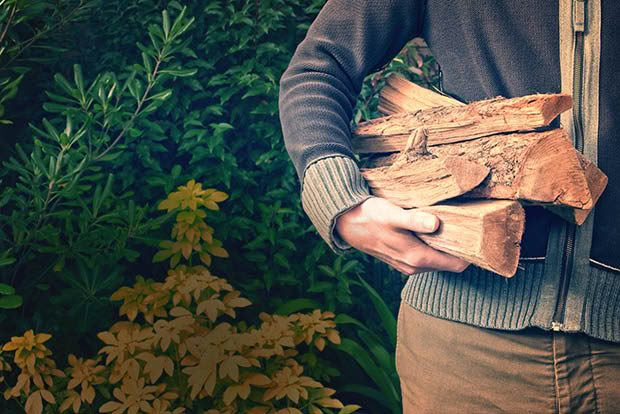4 things to know about good wood

Why size matters, why feeding technique is crucial, and other good wood tips.
Words: Nadene Hall
1. Size matters
Burning firewood is a carbon-neutral way to heat your home. However, burning firewood adds fine particles and gases to the air, causing pollution.
Research has found that the size of the firewood greatly influences how well it burns particles and gases, preventing them from escaping up the chimney as pollutants. Particulate emissions were at least twice as high when small logs were used (5cm x 5cm x 25cm) compared to larger pieces (9cm x 9cm x 25cm).
2. How you feed a fire is important
Reloading a firebox with a single log or stuffing it full generally results in higher particulate emissions. Ideally, you want to add enough wood to fill the firebox to 25% of its capacity. Once a fire is at its hottest, it’s best to regularly add wood to maintain it at 25% capacity, and lay logs horizontally to get maximum heat with minimum emissions.
TIPS
• don’t let firewood touch the firebox walls or door glass as both cool the flames, creating more soot and producing less heat.
• always check the instruction manual for your woodburner and use its recommendations for getting the lowest emissions – the optimal conditions vary depending on the manufacturer.

3. Good wood is dry
Wood that’s too high in moisture (anything above 20%) won’t burn efficiently – instead, it uses its energy to create steam, not heat.
6 signs wood is dry enough to burn for good heat production
• it will be much lighter in weight and possibly look bleached compared to a newly-cut, similar-sized piece;
• if it still has bark, it should peel off easily;
• there may be cracks in the grain at the ends, however this depends on the type of wood;
• the cut ends of dry wood will feel warm and dry, vs cold and damp when freshly cut;
• if you thump two pieces of dry wood together, the noise they produce will sound ‘hollow’ – wetter wood will make a dull thud;
• if you throw a test piece onto glowing hot coals, wet wood will sizzle and hiss; dry wood will catch fire within 1 minute.
4. Use a moisture meter, but do it right
Ideally, you’ll have a moisture meter to measure the dryness of your firewood. However, there’s a trick to getting an accurate reading. In the March 2022 issue of TreeCropper magazine (www.treecrops.org.nz), long-time timber enthusiast Robert Burnside recommends splitting a few pieces of dry wood. Moisture meters only read to a depth of a few millimetres – by splitting it, then immediately testing the fresh cut, you’re getting a much more accurate idea of its moisture levels.
7 TIPS IF YOU’RE CUTTING UP FIREWOOD

Most wood has a 30-50% moisture content when cut – that is, for every 1kg of solids, there’s 300g-500g of water.
• Split the wood at least once – wood dries along the grain up to 15 times faster than across the grain.
• Wood sitting on concrete, tarseal, or another solid surface dries significantly faster than wood on bare soil or vegetation-covered ground.
• Stack wood so there’s space for air to flow between the pieces – this will be away from buildings and trees, which block airflow.
• Stack orientation is important: shorter, narrower stacks dry faster.
• Cover the top of an outdoor stack but not the sides, so it receives maximum sunlight and air – a completely covered stack will take twice as long to dry out.
• If you live in a high rainfall zone, it’s better to store it in a shed (stacked, not thrown in a pile, for good airflow).
• To speed up the drying process, store firewood stacks in a tunnel house or glasshouse as this can reduce the dry time significantly (by up to half).
Drying times
• plantation pine, Douglas fir – 1-2 years, best used as kindling
• ‘old man’ pine (trees 50 years+) – 2-3 years
• macrocarpa, mānuka – 3-4 years+
• blue gum – 4 years +
Love this story? Subscribe now!
 This article first appeared in NZ Lifestyle Block Magazine.
This article first appeared in NZ Lifestyle Block Magazine.
